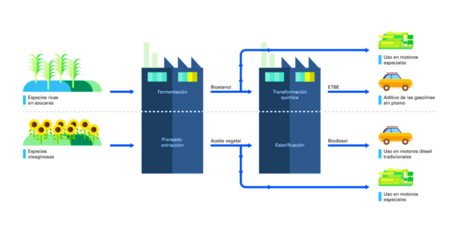
Full Time Professor
Bioengineering Department
Proteins, which are the most sophisticated molecules known to mankind, are the target of most drugs. Proteins have different functions in our body: they accelerate metabolic reactions (enzymes), regulate the passage of molecules between the cell membrane (channels and pumps), form part of tissues (collagen), protect our body from pathogens (antibodies), etc. Currently, AI is being used in drug discovery and design at the same time as new algorithms and computers with faster graphics processing units enter the market.
The process of discovering new drugs and bringing them to market usually requires the investment of billions of dollars and years of research and development. Large pharmaceutical companies now have the resources for such large-scale projects. The first challenge is to determine the 3D structure of proteins that will be the target of potential candidate molecules. The structure serves to understand the function of the protein and also to detect possible binding sites and what residues will be involved. The second challenge is to find the molecules or molecules that will bind to the protein and what effect they will have on the function. The selection of possible therapeutic molecules includes the screening of thousands or even millions of different molecules, which involves millions of dollars in investment, specialized laboratories and quite some time. AI can help reduce time and money spent.
Protein structures are experimentally determined using techniques such as X-ray crystallography or cryogenic electron microscopy. These are tedious, expensive, and can take months or years to get the structure. AI can predict protein structure in a matter of hours [1] instead of months or years, reducing the cost and time to find new ligands (which may be other proteins or drugs). It is important to indicate that approximately 30% of the human proteome is composed of Intrinsically Disordered Proteins (IDP) -proteins that have more than 30% of their disordered residues [2,3]. IDPs bind to other proteins during intracellular signaling and these may be structurally reconfigured due to binding. Predicting these 3D structures is still a challenge.
In 2018, Deepmind [1] launched AlphaFold [4], which cemented the path to finding new therapeutic molecules by being able to predict protein structures using only the amino acid sequence. In 2020, Deepmind launched AlphaFold 2[1], which had a very different architecture to the first version, coming to predict structures with resolutions comparable to those obtained experimentally. It should be noted that Deepmind is part of Alphabet Inc., Google’s parent company.
Currently, pharmaceutical companies such as Bayer, GSK and Astrazeneca are investing billions of dollars in AI technology [5,6]. At the same time, several startups around the world are also exploring and working on ultra-sophisticated algorithms to find new drugs. One of them is Charm Therapeutics [7], which obtained an investment of $50 million from private investors a few days ago. There, scientists and engineers are working to develop algorithms to predict if there is binding and if the ligand produces reconfiguration of the protein structure. Another company, Insilico Medicine, which is based in Hong Kong, has also just received $60 million from different investors [8,9]
During 2021, Silicon Therapeutics, a company using AI, quantum methods and simulations, was acquired by Roivant Sciences, a Swiss-based pharmaceutical company for $450 million [10]. Likewise, Generate Biomedicines, a company that combines AI and protein therapies, obtained investments of $370 million [11]. It has been reported that AI investment has increased by approximately 108% during 2021, to $66.8 billion (Fig 1). Of this 18% corresponds to health care with AI. Of all countries, the USA and China lead in-AI investment in different technology sectors (Fig 2). Investment in AI is expected to continue to grow in the coming years [12], so we must be prepared for new technological changes!
References
- K.M. Ruff, R.V. Pappu. “AlphaFold and implications for intrinsically disordered proteins”. J. Mol. Biol., 433 (2021), Article 167208, 10.1016/j.jmb.2021.167208
- Deiana A, Forcelloni S, Porrello A, Giansanti A (2019) “Intrinsically disordered proteins and structured proteins with intrinsically disordered regions have different functional roles in the cell”. PLoS ONE 14(8): e0217889. https://doi.org/10.1371/journal.pone.0217889
- https://www.clinicaltrialsarena.com/analysis/revealed-the-pharma-companies-best-equipped-with-ai/




